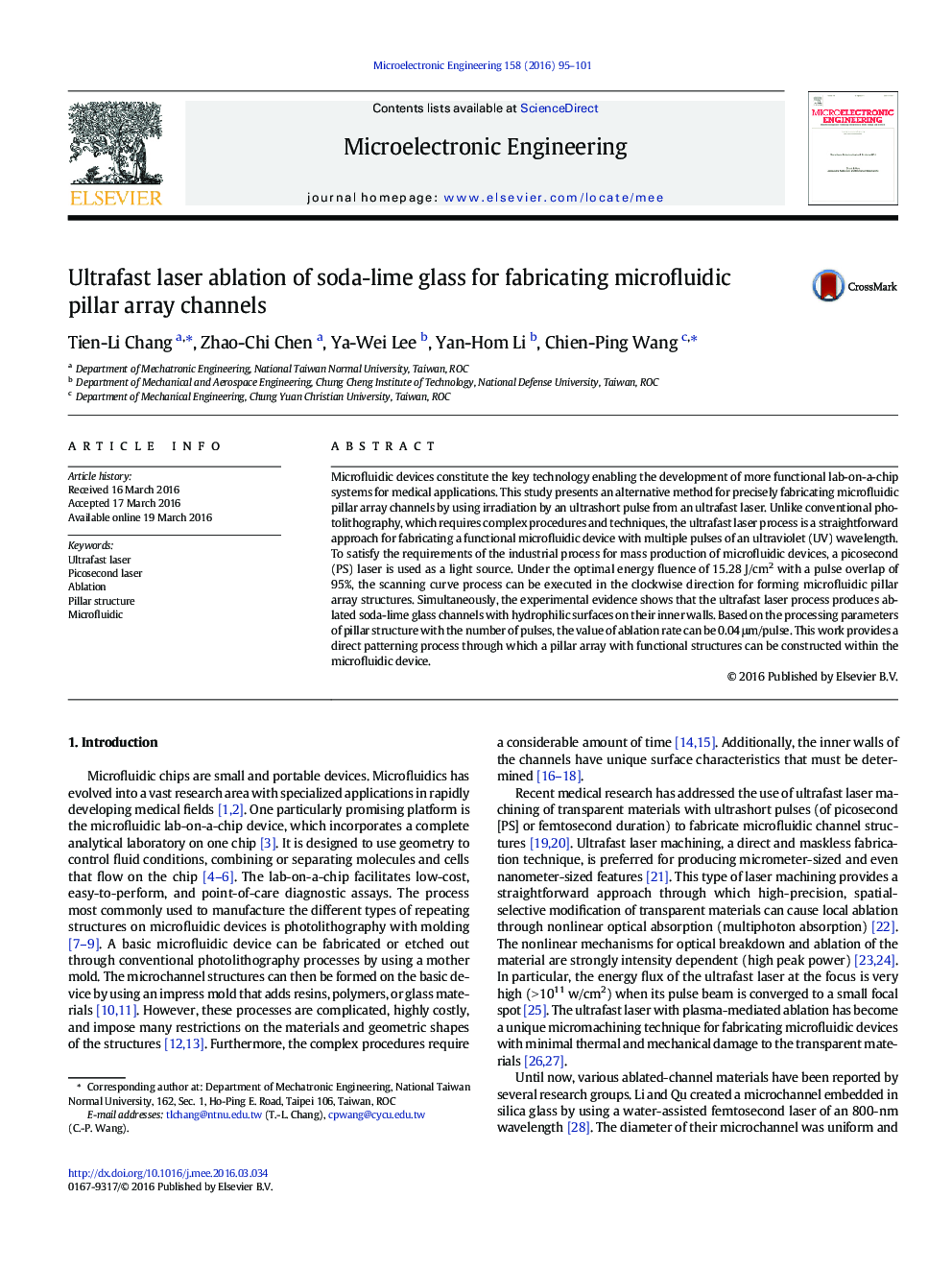| Article ID | Journal | Published Year | Pages | File Type |
|---|---|---|---|---|
| 541157 | Microelectronic Engineering | 2016 | 7 Pages |
Microfluidic devices constitute the key technology enabling the development of more functional lab-on-a-chip systems for medical applications. This study presents an alternative method for precisely fabricating microfluidic pillar array channels by using irradiation by an ultrashort pulse from an ultrafast laser. Unlike conventional photolithography, which requires complex procedures and techniques, the ultrafast laser process is a straightforward approach for fabricating a functional microfluidic device with multiple pulses of an ultraviolet (UV) wavelength. To satisfy the requirements of the industrial process for mass production of microfluidic devices, a picosecond (PS) laser is used as a light source. Under the optimal energy fluence of 15.28 J/cm2 with a pulse overlap of 95%, the scanning curve process can be executed in the clockwise direction for forming microfluidic pillar array structures. Simultaneously, the experimental evidence shows that the ultrafast laser process produces ablated soda-lime glass channels with hydrophilic surfaces on their inner walls. Based on the processing parameters of pillar structure with the number of pulses, the value of ablation rate can be 0.04 μm/pulse. This work provides a direct patterning process through which a pillar array with functional structures can be constructed within the microfluidic device.
Graphical abstractFigure optionsDownload full-size imageDownload as PowerPoint slide
